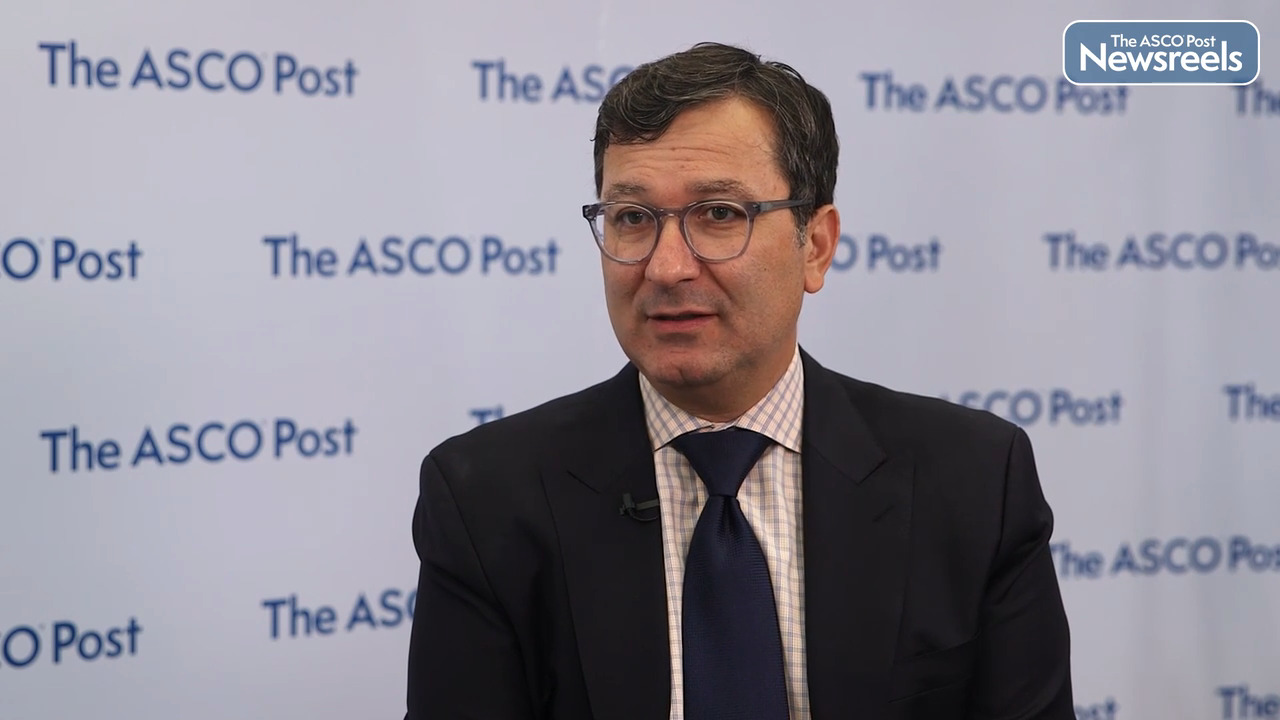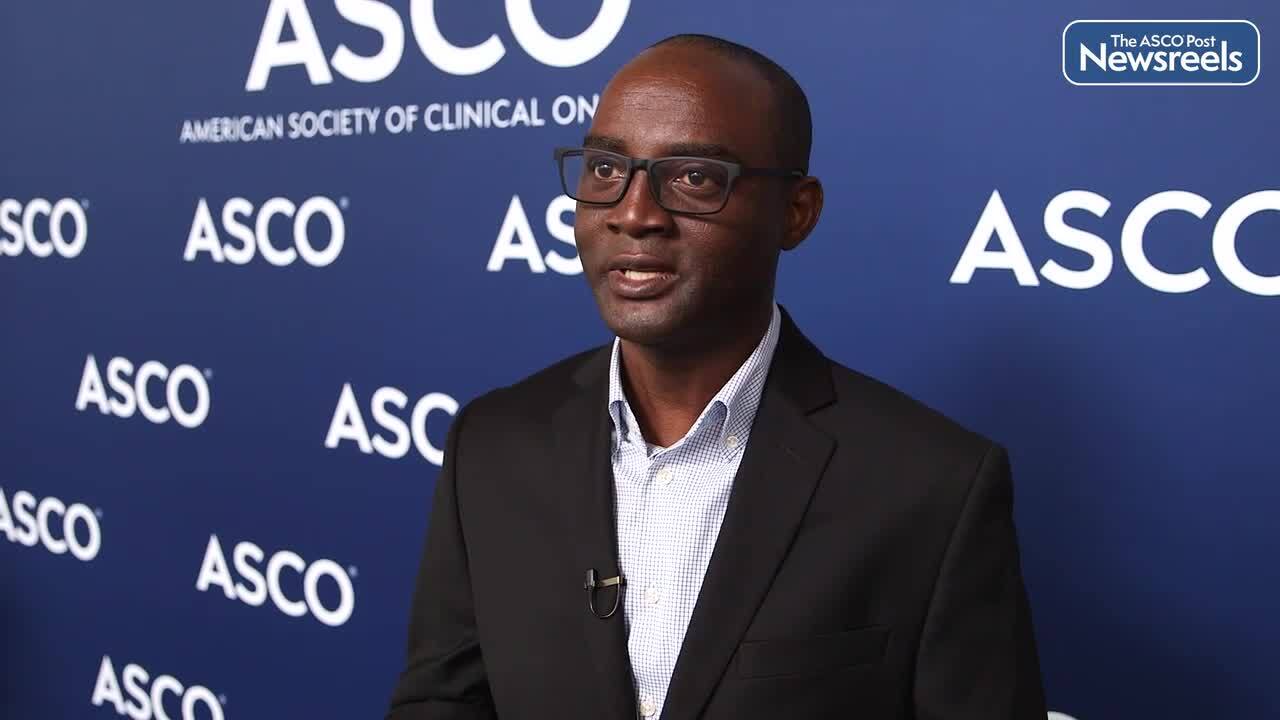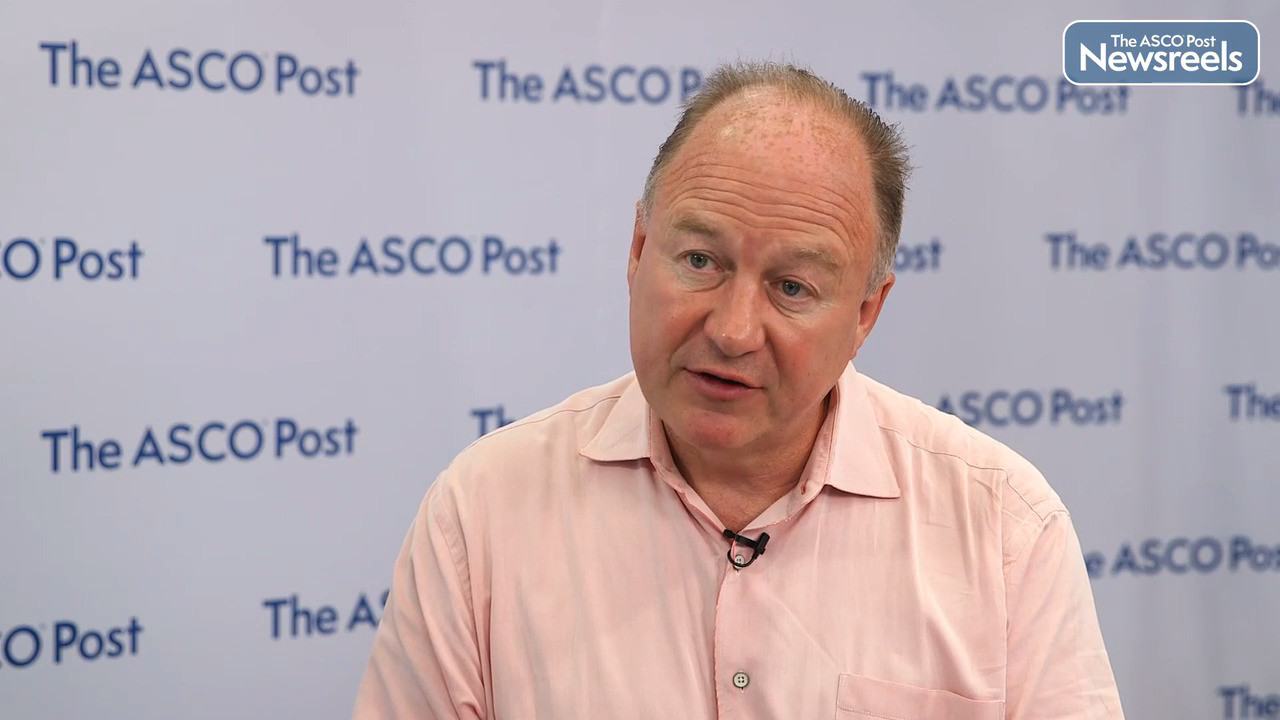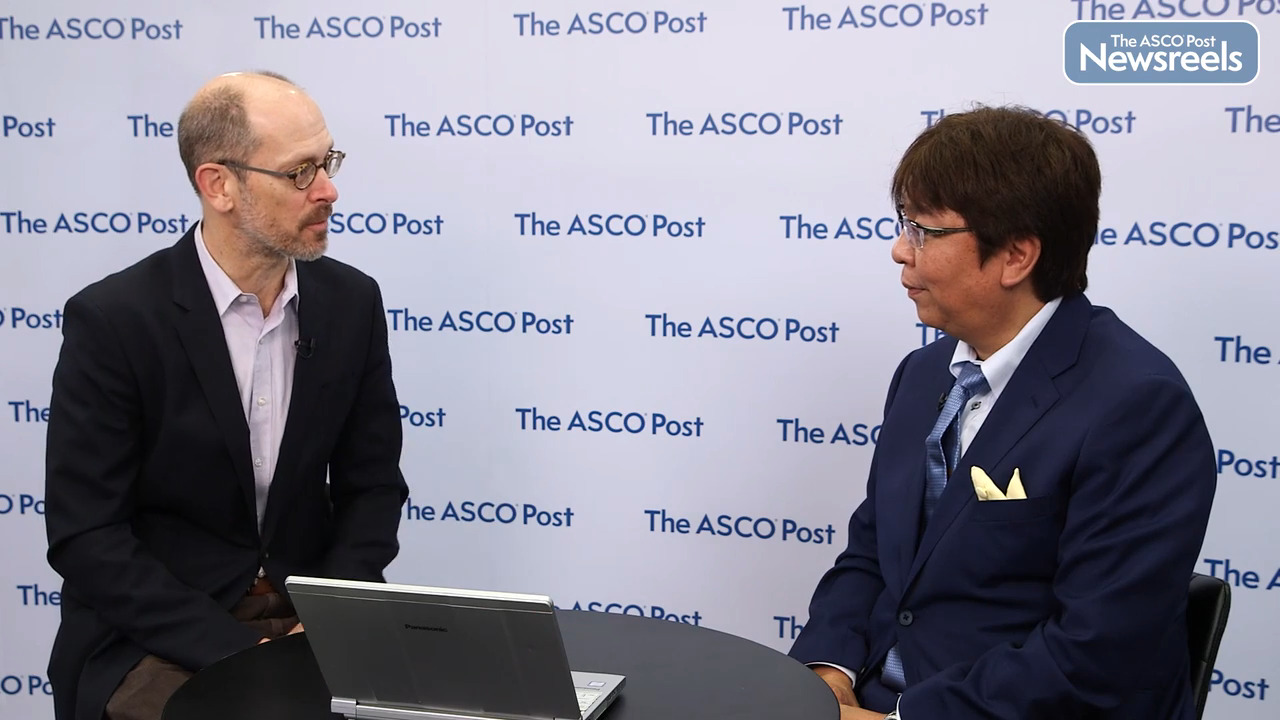Georgina V. Long, MD, PhD, on Melanoma: New Data on Pembrolizumab, Dabrafenib, and Trametinib
2022 ASCO Annual Meeting
Georgina V. Long, MD, PhD, of the Melanoma Institute Australia, The University of Sydney, discusses findings from the NeoTrio trial on neoadjuvant pembrolizumab alone, in sequence with, or concurrent with dabrafenib plus trametinib in patients with resectable BRAF-mutant stage III melanoma. The study may help clinicians determine the optimal combination of therapy (Abstract 9503).
Transcript
Disclaimer: This video transcript has not been proofread or edited and may contain errors.
The NeoTrio trial is one of the many neoadjuvant trials that we are now conducting in melanoma, in Resectable Stage III Melanoma. It is the most wonderful platform. Not only do we rapidly assess the efficacy of drug therapies, cutting drug development time from over two years to six months but we also get wonderful translational tumor tissue to then understand resistance, because this is the greatest unmet need in melanoma. So the NeoTrio trial was a neoadjuvant trial conducted in stage three resected melanoma. Patients were randomized to three different arms. The hypothesis in this trial was how do we best combine BRAF and MEK targeted therapy with anti-PD-1 immunotherapy? Should we give them all three together? Can we get away with just giving a little bit of the targeted therapy in sequence with the anti-PD-1? And this rationale is because we know that BRAF and MEK inhibitors bring in lots of T cells within one week of starting treatment. And then the third arm was a control arm of anti-PD-1 alone. We have previously conducted a neoadjuvant trial with just targeted therapy and that was the NeoCombi trial previously published in The Lancet Oncology, which forms the second control arm. So in this three arm trial, we saw that the complete pathological response rate was very different in the three arms. For the triple therapy of all three drugs together, it was 50% with the major pathological response rate of 55%. The major pathological response is the complete response plus the near complete response. For the sequencing arm, we did not see such a high level of pathological response and it was 15% for complete pathological response and 30% for major pathological response. For the PD-1 alone arm, we soar a 30% complete pathological response rate and a 40% major pathological response rate. So in summary for the pathological response, we saw the highest rate within the triple therapy arm and the lowest rate within the sequencing arm, which was unlikely to be any different from the PD-1 alone arm. In terms of the number of patients that were 20 patients in each arm because this is mainly a translational signal finding neoadjuvant trial. Now what's really important is the quality of these pathological response rates from a pooled analysis that we published in Nature Medicine, first author Alex Menzies, we saw that when you had a pathological response with immunotherapy, we saw a sustained relapse free survival benefit, almost a flat lining of the relapse free survival patients rarely recurred. With targeted therapy however, we see that if you have a pathological response, you can indeed recur. Although complete pathological responders do well with just targeted therapy, they still can recur unlike immunotherapy. Now, what we saw in this trial was that although we saw a higher pathological response rate with the triple therapy patients could recur. In fact, already we've had one recurrence from the major pathological responders and we've had no recurrences in the major pathological responses with PD-1 alone. So in short, this trial showed that sandwiching or sequencing the BRAF/MEK, did not provide that extra activity with the PD-1 that we were hoping for. And that in fact, immunotherapy still confers the greatest benefit in terms of correlating the relapse-free survival with the pathological response. We also saw significant toxicity with the triple therapy particularly pyrexia, driven by the Dabrafenib and Trametinib and enhanced by the PD-1, anti-PD-1 pembrolizumab. And we also saw many patients have to cease the BRAF and MEK inhibitor Dabrafenib and Trametinib during the neoadjuvant phase. The take home message is that giving a little bit of BRAF/MEK inhibitor before your PD-1 does really not change the long term outcome. Leveraging that T-cell infiltrate that BRAF and MEK inhibitors give, cannot be done in this way. And it's probably a nonspecific T-cell infiltrate that we see.
Karim Chamie, MD, of the University of California, Los Angeles, discusses final clinical results on combining the superagonist N-803 with bacillus Calmette-Guérin (BCG) in patients whose carcinoma in situ and high-grade non–muscle-invasive bladder cancers are unresponsive to BCG alone. Of note, cystectomy was avoided in more than 90% of patients with 2 years of follow-up (Abstract 4508).
The ASCO Post Staff
Eunice S. Wang, MD, of Roswell Park Comprehensive Cancer Center, discusses long-term phase II findings of a trial evaluating crenolanib plus chemotherapy in newly diagnosed adults with FLT3-mutant acute myeloid leukemia. The study showed a composite complete remission rate of 86%. With a median follow-up of 45 months, median overall survival has not been reached. A phase III trial is ongoing (Abstract 7007).
The ASCO Post Staff
Maxwell Oluwole Akanbi, MD, PhD, of McLaren Regional Medical Center, discusses the study he conducted, using the SEER database, to evaluate the impact of lung cancer screening recommendations on low-dose CT scanning. The data suggest that guidelines from the U.S. Preventive Services Task Force led to a more rapid decline in the incidence of advanced disease in the United States, especially among minority populations (Abstract 10506).
Paul G. Richardson, MD, of Dana-Farber Cancer Institute, discusses phase III findings from the DETERMINATION trial, which showed that, for patients with newly diagnosed multiple myeloma, lenalidomide, bortezomib, and dexamethasone (RVd) with or without autologous stem cell transplant (ASCT) and lenalidomide maintenance to disease progression resulted in the longest median progression-free survival reported for each approach, and a highly significant difference in progression-free survival in favor of early transplant. While overall response rates were similar, rates of MRD favored early transplant also, but toxicity was greater and quality of life was transiently but significantly diminished. No overall survival advantage has been observed to date (Abstract LBA4).
The ASCO Post Staff
Michael J. Overman, MD, of The University of Texas MD Anderson Cancer Center, and Takayuki Yoshino, PhD, MD, of the National Cancer Center Hospital East, Japan, discuss results from the PARADIGM trial, the first prospective study to test the superiority of panitumumab vs bevacizumab in combination with standard doublet first-line chemotherapy for patients with RAS wild-type and left-sided metastatic colorectal cancer. The study showed that panitumumab improved overall survival in combination with mFOLFOX6, which may establish a standard first-line combination regimen for this population (Abstract LBA1).





